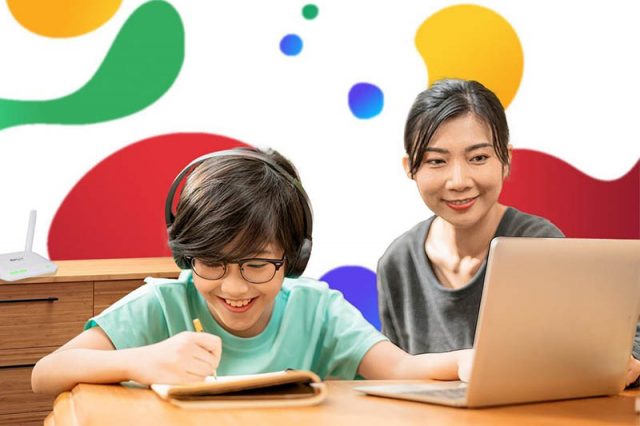With the recent trend in the integration of artificial intelligence (AI) into humankind, a telecommunications company listed ways to make parenting easier with the use of technology.
According to UNICEF Philippines, the average age of children in the country first go online is ten years old, and they spend an average of under two hours a day doing so.
As a commitment to the United Nations’ Sustainable Development Goal No. 16, or the promotion of peaceful and inclusive societies, digital services provider PLDT Home shared seven steps on how AI can provide round-the-clock assistance to parents in safeguarding their children’s well-being in the digital space.
Maximize generative AI in learning
In teaching children about internet safety, it is important to utilize fun and creative ways of explaining.
To cater to the interest of kids while capturing their attention, Google’s conversational generative AI chatbot Bard can help give an entire list of ideas and activities that families can try out.
Bard can be asked simple questions like “What’s a fun way to teach internet safety to kids?” or prompts like “Interactive websites that teach internet safety.” It can also be asked for book and story recommendations.
Interactive online games, conversation starters and even additional tips are also some of what the AI chatbot can provide to make learning about internet safety an enjoyable experience.
Monitor kids’ online interactions
Kids are curious and vulnerable about the digital atmosphere, and technology can help them stay away from potential risks through content filtering, depending on their age.
Tools by Google can aid parents to monitor their children’s screen time, set limits and shut off their devices at bedtime.
Google’s Family Link can be used by parents to track and control their kids’ online activity, including text messaging and social media, as well as video hosting service TikTok’s Digital Wellbeing features.
Circle Home Plus, a device and subscription service that can be paired with an existing router, may also be utilized to pause access to the internet, create time limits and add content filters to all devices on the home network, including Wi-Fi devices, phones and tablets outside the home.
Using real-life situations in teaching empathy
Even when using simulation as an online tool, it is still important to include real-world scenarios that kids may apply to their everyday lives.
For instance, PLDT Home and Google’s Be Internet Awesome video series features Sam and his AI friend Robo-berto in adventures that include songs and situations, that teach the former valuable lessons on digital responsibility, such as thinking before you click and bullying.
In one episode, Sam discovers that forwarding the posts of his friends can hurt them.
“Ako po’y nanliliit, ako ba ay nanglait? Parang di niya na gets, ibang react ba ang ipapalit?” he sings and turns to his friend Robo-berto. The robot sings, “Pag online chikahan, medyo hirap maintindihan.”
Raising critical thinkers
On a good note, children are used to technology in a way their parents aren’t, and they can already be trained to think critically about the accuracy of the information they read or watch.
This results in learning for themselves how to evaluate deepfake technology when it’s being used to sway or harm their young minds.
By using AI, web content and online interactions can be analyzed to detect and block inappropriate or harmful websites and social media platforms. Patterns of online harassment and potential risks can also be identified by monitoring various data sources.
AI can also filter information and trace the source of a story and its authenticity by evaluating if it is backed by credible evidence.
Easier to navigate locations
AI-powered GPS and geolocation technologies can help parents keep abreast of their children’s whereabouts; if they are in school, with friends, in the mall, or in a place where they would normally not go.
Wearable devices like watches or smartphone apps with AI algorithms can provide real-time location updates, geofencing capabilities and alerts if a kid goes beyond predetermined safe zones.
Enhancing a home’s security
Surveillance and security systems are now so advanced that people can monitor their home 24/7 from their phone.
AI-powered cameras and systems use algorithms to analyze video feeds to detect unusual behavior, identify potential dangers — like if someone left the door open — and send an alert.
Tracking the family’s health
Technology has made it possible for wearable devices and smartphones to track vital signs, provide health monitoring, and detect irregularities in activity levels, as well as potential health issues.
Insights on a child’s cognitive, motor and social development are now accessible with apps and online tools that use AI algorithms. Parents can also use AI-powered scheduling apps to manage their kids’ school routines and homework to simplify the family’s daily schedule.










